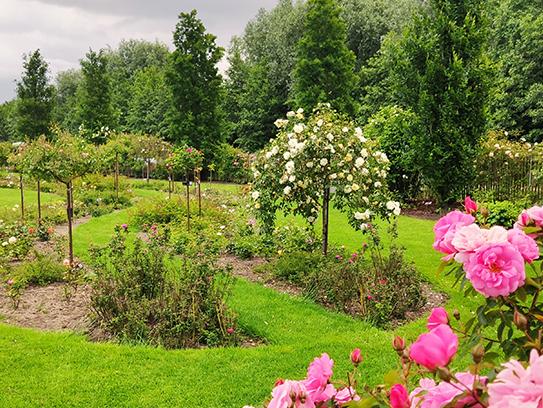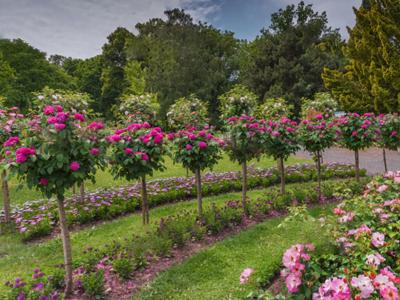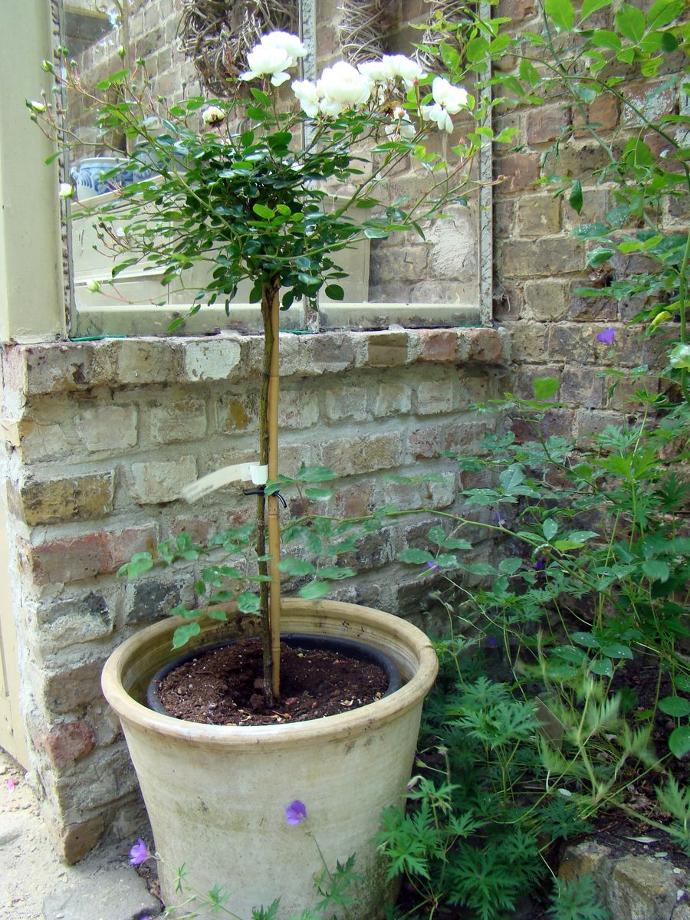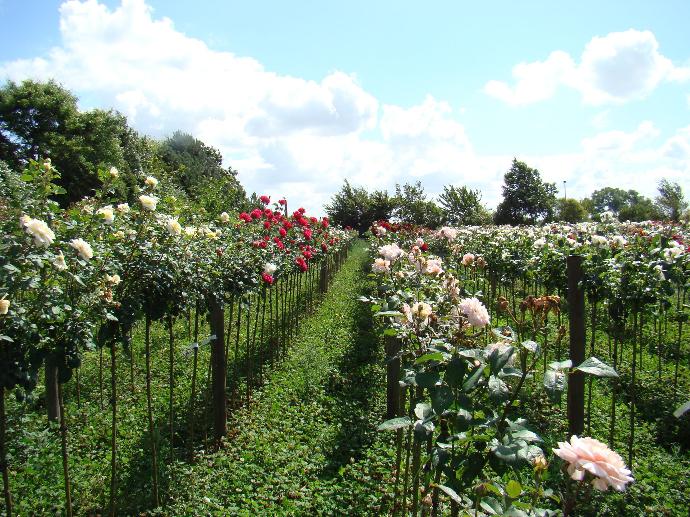What is a standard rose? It is a nice example of horticulture!
As a grower you have to be patient to grow a standard rose, but the result is impressive.
It starts with the rootstock, which can easily take two years of work. Here it is important that a good root system is cultivated and strong long branches. The best of those branches is kept because it later becomes the 'trunk'.
To obtain a nice round crown, we graft on the four cardinal points.
That is abundant... but that way the end result remains top, even if one of the four fails.
Throughout the last summer on our field, we stimulate the plant to branch vigorously with careful pruning.
At the end of the four-year journey, we offer you a rich assortment of shapes and colors in different trunk lengths: 60, 80, 110, 140 or 160 cm
So there's something for everyone!
Standard roses...
a wide range of uses

Introduce some height to your perennial border
An interestingly conceived perennial border is a feast for the eyes! It mainly plays with diversity of shape and color, contrast and harmony. Flowering periods follow the seasons and plants such as Verbascum, Digitalis or Allium accentuate height and verticality. But these are transient. A standard rose can be a valuable addition here. It also changes with the seasons, but retains its architectural value all year round!
Add rhythm in your garden design
A garden, no matter how colorful or extravagant, will still feel harmonious if you use this tip: Repeat one striking element and let it come back throughout your design. It will give coherence to the different garden parts. This is of course possible with many things: statues, column trees, evergreen topiary, but why not be original and do this with standard roses?
More on our garden design service


Eye-catcher in a symmetrical garden
We already talked about rhythm and that is certainly important in a symmetrically constructed garden. Standard roses can contribute to a certain stateliness. They offer playful colors but fit into a tighter garden plan. Whether you are aiming for a contemporary garden or a small Versailles, impact is guaranteed!
More on new dawn (left photo)
Ideal in a small garden
Not enough square meters in your garden to express your plant lust? No worries! With a standard rose you add an extra layer of flowers on top. The trunk takes up very little space. Other plants can therefore grow under your rose close up to the stem.


Keep them on the patio in a spacious container
Even if you don't have a garden or if it is already full, you can still enjoy what a standard rose has to offer. They can be kept in a spacious pot on your patio. Like all plants that are kept in pots, it is important to freshen up the root ball every few years and to supplement fresh potting soil. Also keep an eye on watering and nutrition.
Shapes and sizes
Depending on the characteristics of the rose variety we graft, the appearance of the crown will differ.
If we use a tea hybrid, the crown will be more upright. Floribunda or polyantha roses often form a more compact round crown, while climbers and ground cover roses give a flower fountain or waterfall.
Diversity is key!
In addition, you can choose from different sizes. This refers to the trunk length, measured just above the root up to the first graft :
60 cm = low stem
80 cm = half stem
110 cm = standard size
140 of 160 = weeping shape


How to care for your standard rose?
It doesn't take a lot of work. Once a year (late February / early March) we prune the crown to keep the plant compact and vital.
Everyone can use a little support from time to time, including a rose! Place a sturdy wooden post or metal bar against the trunk to ensure that the trunk does not break in strong winds.
Finally, it is recommended to remove wild shoots that may grow from the rootstock. The smaller they are, the easier!
Klik hier voor onze beste stamrozen.
Een selectie uit ons ruimer assortiment.
Newsletter
Stay informed, subscribe to our newsletter!
You will be notified 4 times a year of the most important rose news and activities at the nursery.
Green professional
For professionals, landscape architects,
garden designers and landscapers, nurseries, municipalities, garden centres, etc.